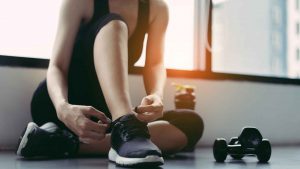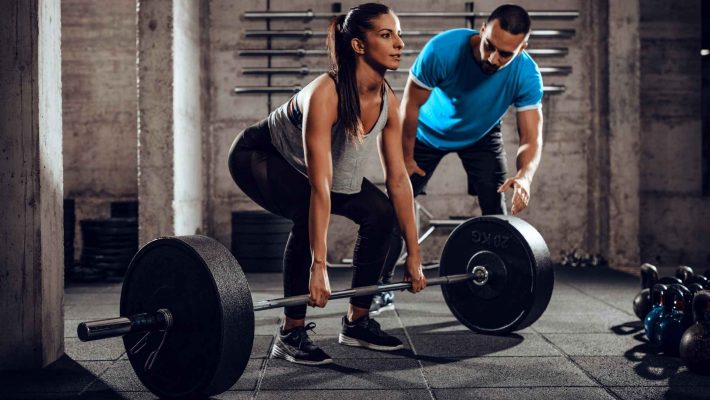Many people look forward to their first day at the gym. However, the first day can be challenging if you’re not adequately prepared. So, we have outlined some important tips to help you get started with the beginner’s gym workout.
Working out at the gym is often a big part of people’s lifestyles. It gives them a chance to break away from the stressful work life, to exercise and meet fitness goals, and to catch up with friends. However, when you just start going to the gym, it may be daunting to get used to. Unless you have a personal trainer, a beginner’s gym workout often consists of bits and pieces you have seen and heard through other people, the television, etc. This may not always work in your favour. So, we have broken down the beginner’s gym workout into several points that you can keep in mind.
Check in with your capacity and requirements as a  beginner
beginner
A beginner’s gym workout is not going to be identical to that of a pro-athlete. This is simply because they have different fitness levels, and their bodies have different requirements. As a beginner, it is important for you to check in with your current fitness levels and body requirements. This will give you a good idea on how to get started with working out. As you start going to the gym regularly, you should also keep checking in with your body to see if any muscle group is lagging. If it is, you can work on that by doing isolated exercises that target that muscle group.
However, remember that not every body responds to exercise the same way. Some exercises may work wonders for your friends, but not work for you. And, your arms may show quicker development than your legs.
It is important not to get discouraged. Give yourself and your body time to see the difference. You should indeed be patient; but if something is not working for you, it is best to change it. It can also be helpful to mix things up a little – try to tweak your routine by adding or changing a couple of exercises or increasing the weights.
Use the correct techniques in your gym workout
When working out at the gym, technique is key. When you master the correct techniques, you conquer half the battle. This is because your body adopts the correct form where each muscle is in line with the required purpose.
Each muscle is prepared to work in unison, perform that exercise, and receive the desired result. To truly get significant goals, you have to get your technique in place.
You can continue doing targeted and isolated exercises as much as you like; it won’t yield the desired results as long as you don’t do it right.
And, the truth is that getting the correct form is not even that difficult. You can take the assistance of your gym instructor, and ask them for any doubts. You can also keep checking your form in the mirrors to ensure you are doing it absolutely correctly. Another great idea would be to have an experienced person monitor your workouts, and guide you in case of any errors. You will soon realise that each exercise brings better results when you do it right.
Focus on each muscle group across several workout sessions
Your gym instructor will likely chalk out a training plan that breaks your body down into multiple muscle groups – back, chest, arms, shoulders, legs, back, etc. Each muscle group requires a certain set of exercises that are generally ‘push’ or ‘pull’. For example, arms require you pull the weight towards your body; whereas legs require you push the weight away from your body. For each day, you should focus on either one muscle group or one movement. When you do that, your muscles work in unison. This goes a long way in strength training, and when you’re trying to build muscle.
 Incorporate rest and recovery into your training
Incorporate rest and recovery into your training
Your training will yield better results if you are consistent with your workouts, and incorporate regular rest days. Beginners often tend to get carried away, and end up exercising more than necessary in the first few weeks. This pays off negatively in the long run, and can even reserve the goals you have achieved.
It is always a good idea to assign rest days where you do no strenuous exercise, and only practice stretching, yoga, or light cardio. You should also remember to rest between reps.
For example, after every 10 reps, take a 60-second break. Or follow your trainer’s instructions. But be sure to time it and be consistent with it. When beginning with gym workouts, these rest periods make a world of difference.
Progress gradually with your gym workout
As a beginner, you may be compelled to give it your all on the first day, or even the first week. But, remember that it is far more important to do it consistently than do it excessively. In the first few weeks, it is not important to push yourself. But, it is important that you go every day. Once you have incorporated your gym workouts into your every day routine, you can look at building up the tempo.
Start slowly, and take each day as it comes. But, keep a flexible range of exercises you would like to do on a regular basis, and build these on a pace that works for your body.
You may want to progress rapidly with your exercises, but your body may not contain the physical capacity to be able to do that. So, check in regularly, and ensure you are progressing a little every day. And, you are doing it at a pace that works for your body.
 Through it all, remember to stay focused on your gym workout and consider the long-term plan.
Through it all, remember to stay focused on your gym workout and consider the long-term plan.
Some beginners often think that they can move mountains in a short period of time by working out excessively. This may even help you achieve your goals on a short-term basis. But, it pays off negatively in the long run. Your body gets burnt out, you lose the motivation to work out, and your metabolism may even fall. Needless to say, this technique is not for the long run. So, it is important to adopt practices that will stay with you through life.
At the end of the day, fitness is not just going to the gym every day; it is adopting a healthier lifestyle that will benefit you across your lifespan.





